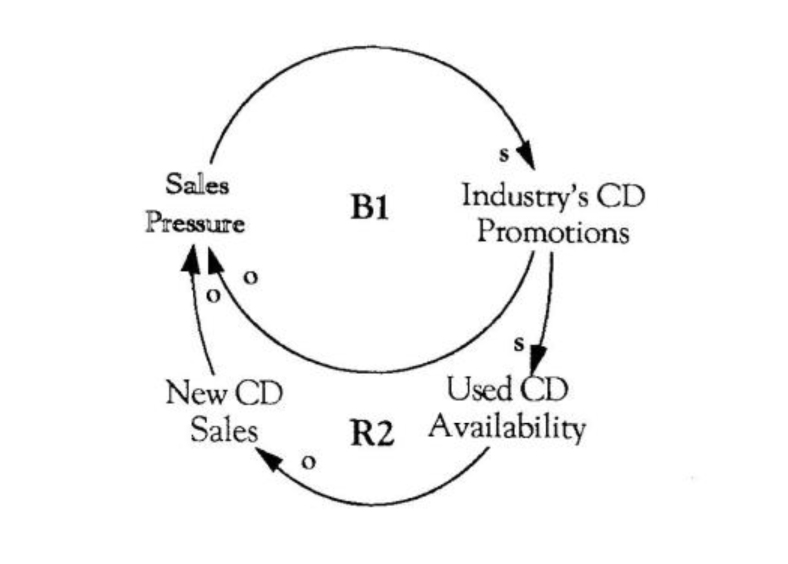“The compact disc…has one big advantage over the old LP: it lasts almost forever. Great for consumers, a worry for record companies. Indeed, [this] has triggered an inevitable confrontation, pitting the giant record companies against their retail outlets…[Record] retailers say that the major record labels should clean up their own backyards. Much of their inventory of used CDs comes from record clubs owned by Sony, Warner, and BMG, or from free promotions. ‘If they’re worried about the consumer’s perception of the value of their CDs, they should stop selling them through record clubs at eight for a penny,’ says John Carnahan, president of Northern Lights Music Inc.” (“What’s Wrong With Selling Used CDs'” Business Week, July 26, 1993).
At the heart of the controversy over the sale of used CDs is the decision by the nation’s fourth-largest record chain, Wherehouse Entertainment Inc., to carry half-priced used CDs alongside new ones. While this practice is not illegal, the record companies contend that reselling cuts into the sales of new CDs, diminishes their value, and deprives recording artists of royalties. The issue is further complicated by the fact that Wherehouse has always been viewed as an industry innovator, opening the possibility that other large chains may start to carry used CDs to remain competitive.
Ironically, the actions of some record companies have actually contributed to the rise in used CD sales. For example, when Wherehouse offered its customers a no-hassle return policy on CDs, Sony stopped accepting returns of open CDs from retailers. Instead, they offered a % credit. With many returned CDs on their hands, Wherehouse found it more profitable to resell them at a discounted price than to return them to the record company.
Promotions “Fix”
In a typical “Fixes that Fail” situation, a problem symptom cries out for resolution. A solution is implemented that alleviates the symptom, but relief is usually temporary and the symptom returns. Often, the problem is magnified because of accumulated effects of repeated application of the solution, or as a result of unintended consequences that unfold over a long period of time.
In the record industry example, the need to sell CDs leads to reliance on various promotions (B1 in “A Promotional Fix that Failed”). Such promotions increase the availability of CDs, which affects the sale of new CDs by adding to the used CD market (R2). The loss of sales from new CDs creates a profit squeeze which leads to sales pressure and further reliance on marketing techniques like CD promotions.
Companies such as Warner Music, Capitol-EMI, and MCA have responded to the threat of the used CD market by refusing to pay their cooperative advertising payments to Wherehouse and any retailer selling used CDs. But these actions will have little effect on the dynamics of the situation. While withholding advertising payments may deter some record stores from selling used CDs, the growing stock of used and cheaper CDs ensures that the secondary market will continue to grow.
A Promotional Fix That Failed

Pressure to increase sales results in promotions that offer a high number of CDs for a discounted price (81). As the industry’s use of these promotions increases, the amount of CDs on the market also rises (R2). This increase leads to the growth of the used CD market, and reduces new CD sales.
CD promotions were important in the early days, since CDs were significantly higher in price relative to records and cassette tapes. A promotion that offered eight CDs for a penny would bring in customers, who would then continue to buy CDs because of their higher sound quality. And, in fact, the promotions used for CDs in the mid-to-late 1980s were the same as the successful promotions used for records or cassette tapes in the late 1970s.
What the industry may have failed to do, however, is to evaluate the usefulness of the promotion over a longer time horizon. Since the market for used CDs appears to be growing, the industry needs to consider the longevity of the CD’s useful life relative to that of records and cassette tapes in their future plans. Record companies should accept the fact that saleable used CD’s will be around for a long time and figure out a way to live with them instead of fighting against this growing market.
